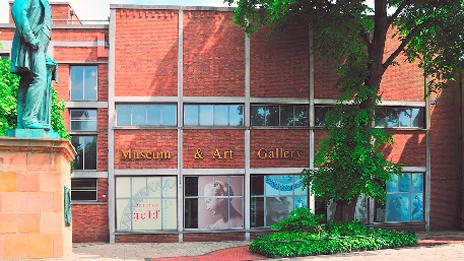Joseph Wright sketch on show at Tate Britain
- Published

An Experiment on a Bird in the Air Pump and the original sketch are both on loan to Tate Britain
The only known sketch of a seminal painting by Joseph Wright is on display alongside the finished version for the first time.
The rarely-seen sketch is a precursor to An Experiment on a Bird in the Air Pump, and is on the reverse of a self-portrait of the artist.
It has been loaned to Tate Britain as part of a display of Wright's work.
The paintings show a white cockatoo being deprived of oxygen as the formation of a vacuum is demonstrated.
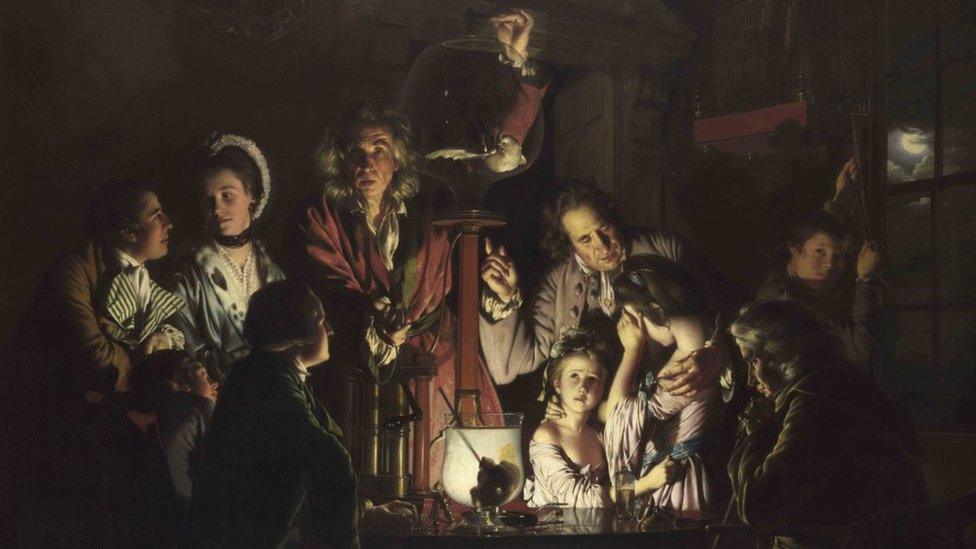
The figures in the painting show a range of feelings, including fear and fascination
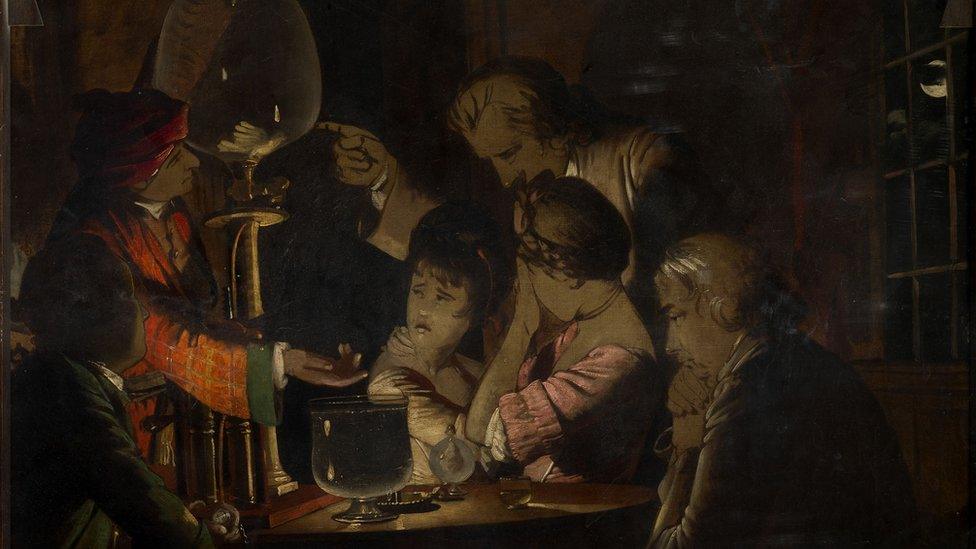
The scientist (in red) seems to reassure the girl in the sketch, unlike the final version
Tate Britain curator Greg Sullivan said: "Having an opportunity to compare the early sketch with the final version will give us some insight into his original ideas about the work and what decisions he made to get to the final painting."
In the finished work, Wright depicts the demonstrator with his hand poised over the valve of the air pump, leaving it unclear whether the bird will die or be saved at the last minute.
However, the newly-displayed sketch shows that Wright originally planned to show the demonstrator holding his hand out to comfort a small girl, presumably offering reassurance that the bird would not die.

Joseph Wright 1734-1797
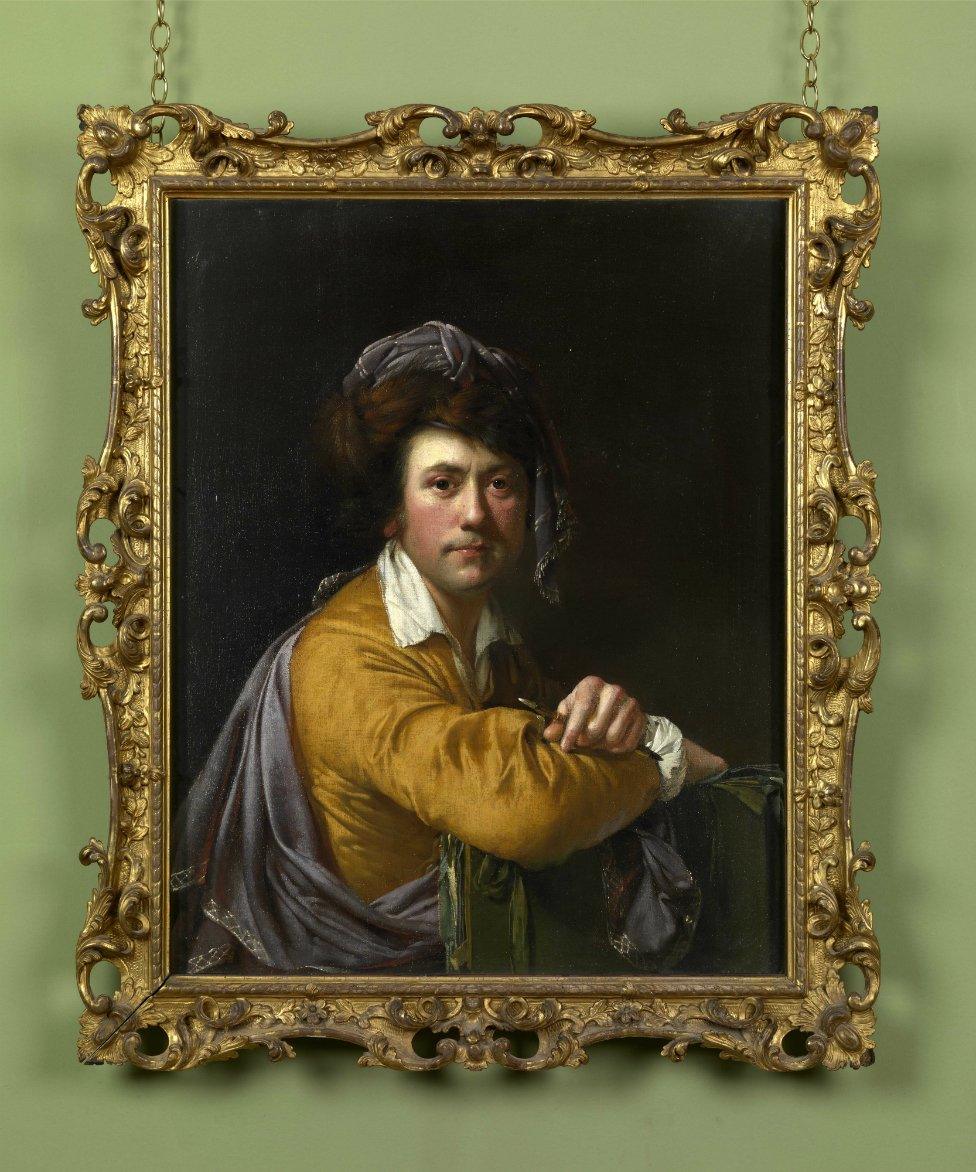
The sketch is on the reverse of a self-portrait of Joseph Wright, but has been reframed for the display at Tate Britain
Known as Joseph Wright of Derby, he was the first major English painter to be based outside London
Wright was the first artist to depict industry and scientific experiments of the age
He was noted for his use of chiaroscuro, which emphasises the dramatic contrast of light and dark
An Experiment on a Bird in the Air Pump (1768), recreates an experiment by the 17th Century English scientist Robert Boyle
The High Sheriff of Derbyshire Godfrey Meynell donated a Wright painting in 2015 to the Christian charity Us to support refugees (raising £665,000)
Source: BBC Your Paintings

Derby Museum curator Lucy Bamford, who is in charge of a collection of Wright paintings, said it was rare to find an oil sketch of his work.
The sketch shows how Wright decided to "ramp up the drama" in the final version, she said.
The final version of the painting was donated to the nation in 1863 and usually hangs in the National Gallery.
It was painted in 1768 and is Wright's most renowned painting.
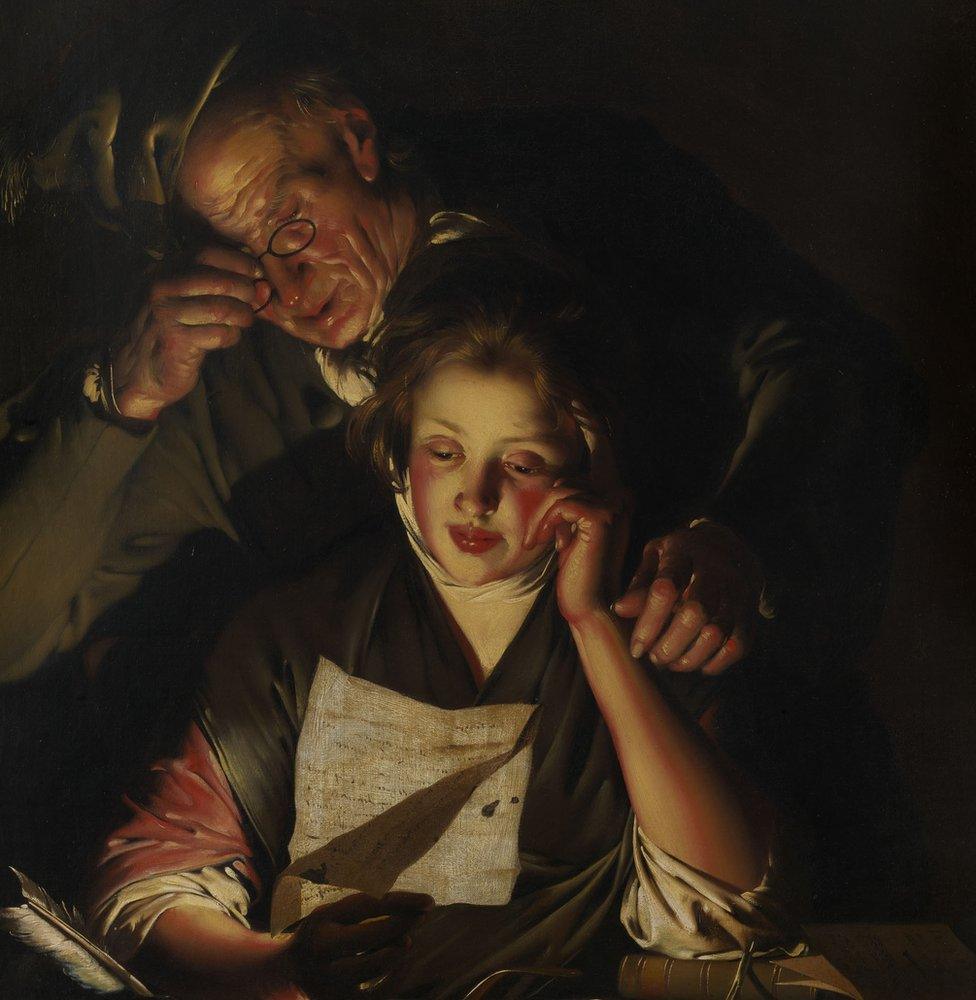
The sketch was loaned to the gallery along with two other Wright paintings, including A Girl Reading A Letter with an Old Man Looking over her Shoulder
- Published10 December 2015
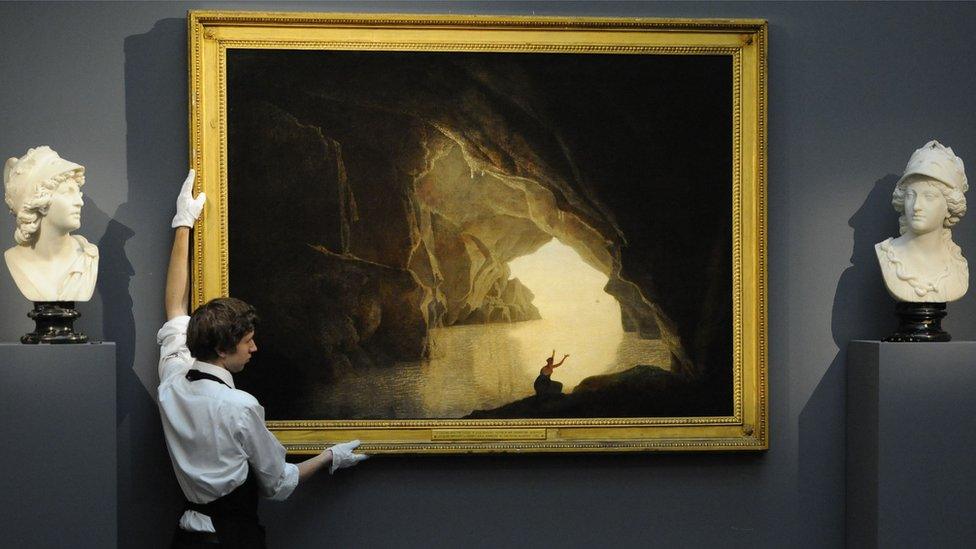
- Published27 April 2013

- Published5 December 2012
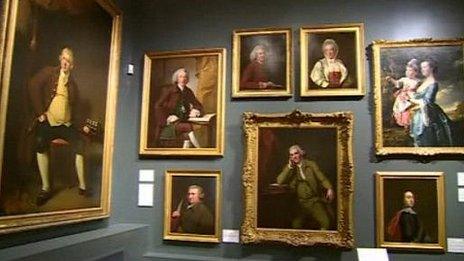
- Published20 February 2012
